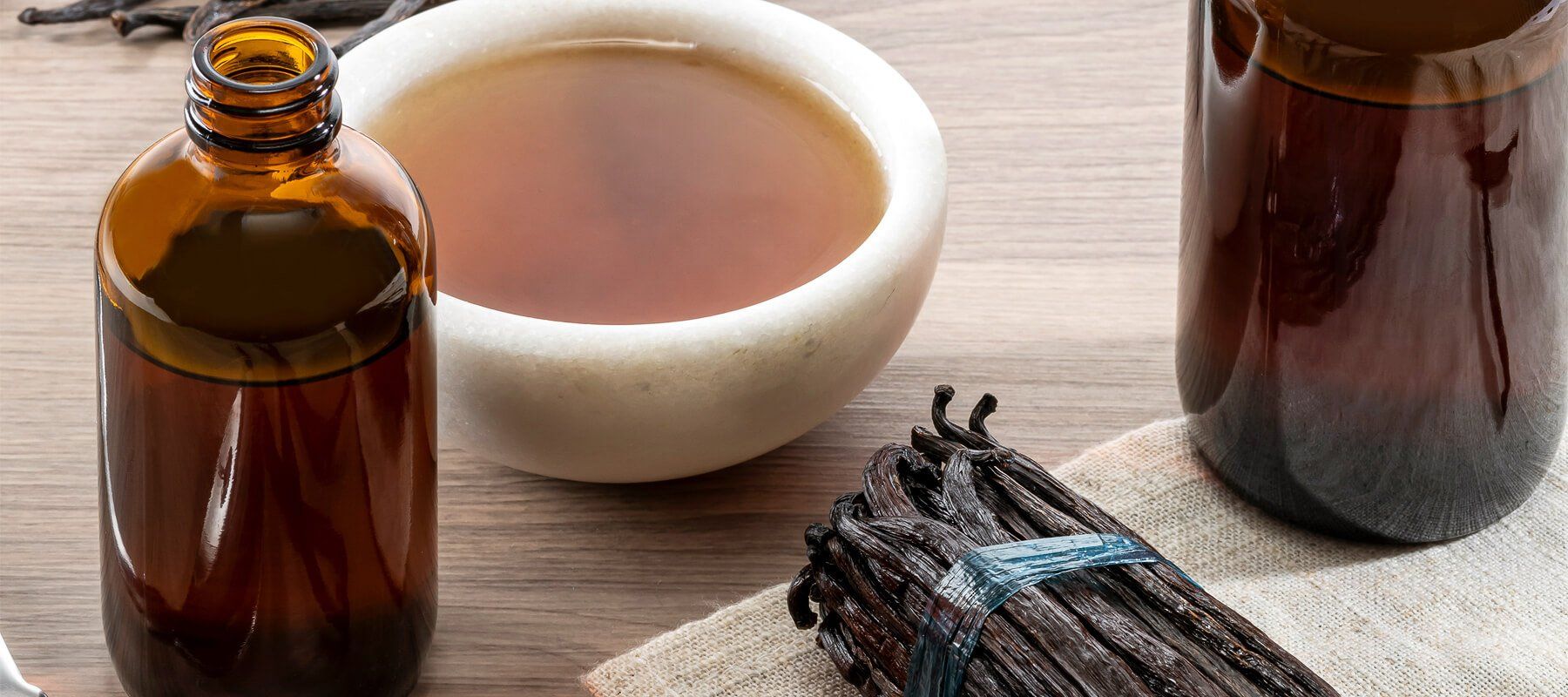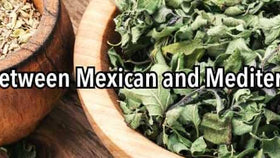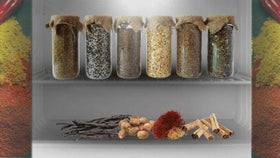Where Does Vanilla Extract Comes From?
How vanilla beans are turned into vanilla extract
Every baking enthusiast should have a bottle of vanilla extract in their pantry. This ingredient can enhance the flavor in desserts from chocolate chip cookies to cupcakes to homemade apple pie. There are multiple varieties of vanilla extract on the market, including pure vanilla bean extract and its imitation counterpart. Fans of the flavoring agent know that the pure form is more expensive (but worth it). One reason for this is because the process of creating it is intricate and lengthy. This resourceful article will describe the complicated procedure and the provenance of vanilla extract.
It’s hard to believe that vanilla beans grown in tropical climates such as Indonesia end up in kitchen cabinets halfway around the world, both as whole beans and in extract form. We'll start from the beginning, to explain how this happens.
The Origins of Vanilla Beans
Vanilla originates from the pods of tropical orchids most commonly of the vanilla Planifolia species and vanilla x Tahitensis species. These orchids grow as a vine and take three years to mature and flower. When the plant finally does bloom, it only does so for a single day. In this one-day window, the flower must be pollinated to create pods, which, once harvested and cured, will become the vanilla beans we all know and love. This means hand pollination of the flowers has an extremely limited window of opportunity to pollinate before the bloom dies and its ability to produce vanilla beans is lost.
Another hindrance to the process is that the vanilla orchid is tropical in nature, meaning of course, that it primarily grows in tropical climates. In fact, close to eighty percent of the world’s vanilla beans come from Madagascar. While most of the world's supply of vanilla extract is produced in the United States and Europe, the origin of vanilla beans is still most notably from Madagascar, Papua New Guinea, and Indonesia. Since the orchid grows in these climates, they’re more susceptible to dangerous weather conditions like monsoons or extreme heat. Thus, sometimes cultivators can’t even use some of the orchids that reach maturity because external factors have damaged them. This means an already scarce resource is made even more valuable.
Curing and Fermenting the Beans
Once the grower harvests the green vanilla beans from the orchid, they begin the curing phase. The first step in curing, when using the Bourbon method, is to soak the vanilla beans in hot water to accelerate the fermentation process. After this, the vanilla beans are wrapped in wool blankets for several days before the process of sun-drying begins. At times, but not commonly, ovens can be used. This practice is not common due to the sheer cost of such machines and the abundance of sunlight makes it much more practical. Using the hot afternoon sun, vanilla beans are left in open areas during peak hours of the day for several weeks and then wrapped back in blankets and placed in wooded crates overnight to maintain the internal temperatures. The daily dose of sun accomplishes two aspects critical to the development of quality vanilla beans. First, the sun reduces the moisture of the vanilla beans, and second, the sun helps maintain the internal temperatures vital to producing the complex chemical chain of reactions that are the chemical signature profile of vanilla.
Once the beans have fermented properly, and have been dried in both the sun and shade, they go into tightly sealed containers for final conditioning. This last stage is vital to producing a stable, and well-developed vanilla beans. Once fully conditioned, the vanilla beans are shipped to distribution sites across the world. Keep in mind that since the beans are shipping from tropical locations, it’ll be a while before they reach the United States. Given that extracting the beans is labor-intensive and the curing process cannot be rushed, it’s no wonder that pure vanilla extract is so expensive at grocery stores.
Making Vanilla Extract
Once the beans have arrived at their destination, the buyer begins the journey of producing the vanilla extract quite often used in baked goods. Essentially, all folks need to make vanilla extract is alcohol and vanilla beans. The process starts with grinding up the beans and placing them in an alcohol-based solution. The longer the beans soak in the alcohol, the more potent the vanilla extract will be.
Most people leave the beans in the liquid for up to two months to get a potent vanilla extract. Anyone brave at heart should consider making their own vanilla extract at home. The method is rather simple, as long as you’re patient enough. Luckily, Slofoodgroup has grade-A vanilla beans in bulk for folks who want to take on the task. It’s essential for home bakers to use high-quality vanilla beans when making their own vanilla extract. That’s why baking-enthusiasts should look at Slofoodgroup’s wide selection of vanilla products online. We offer superior ingredients that’ll enhance the taste of any meal.
The Imitation Extract Game
Since obtaining and cultivating vanilla beans is so intricate, many manufacturers have developed artificial vanillas to avoid the hassle. There are pros and cons to this alternative. The process of creating imitation vanilla flavor takes less time. This is partly because of a compound known as vanillin. Vanillin is the main component of cured vanilla beans, and it brings out their flavor. People can create vanillin naturally or synthetically. When distributors want to save money, they develop an artificial version of vanillin and create imitation vanilla extract.
There a couple of other things to keep in mind concerning imitation vanilla extract. For starters, some companies claim their vanilla extract is pure. However, every pure vanilla extract will have a country of origin on the label, such as Madagascar. If the country of origin isn’t on the label, it’s likely not the real deal.
Is There a Difference in Flavor Between Real Vanilla and Imitation Vanilla:
People always ask the age-old question: which ingredient tastes better? For those looking for the most authentic flavor possible, pure vanilla extract is the way to go.
Natural vanilla is creamy and rich, and it’ll add depth to any dish bakers create. That being said, imitation vanilla extract may have its uses. Anyone who’s making dishes with a variety of flavors could probably get away with using the artificial variety. Artificial vanilla extract won’t be as flavorful as its pure counterpart. But it’s certainly acceptable to add it to dishes where someone only wants a hint of vanilla, as the flavoring agent won’t overwhelm the recipe.
This article has answered the question of where vanilla extract comes from and provided insight as to why the ingredient is so expensive. Pure vanilla extract makes a long journey from tropical countries like Madagascar or Indonesia. Furthermore, extracting the beans is a painstaking and lengthy process that not many folks understand. Since growers put so much effort into cultivating and shipping the product, prices reflect that.
Some manufacturers try to save on costs by developing artificial vanilla extract. Bakers making dishes with multiple ingredients may consider using the imitation variety, as it blends with other elements. Another option for folks wanting to tackle a project is to create vanilla extract at home.
Experimental home bakers who want to give this a shot should look at Slofoodgroup’s selection of vanilla beans in bulk. We offer top-of-the-line products from countries around the world. We promise our ingredients are superior, and they’ll make any meal taste scrumptious. Plus, cooking enthusiasts can brag to guests about their ingredients’ worldwide journey before landing in their kitchen.








Slofoodgroup
Author